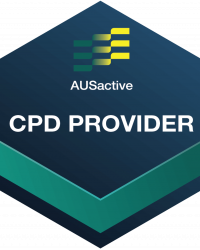Wunda Chair Repertoire
Strength:
Foot Work: The Table
Alternate Names
n/a
Derived From
Mat Pilates: Leg Pull Back
Primary Element
Strength
To develop and build strength in the posterior muscles of the gluteal, legs, and back.
Secondary Element
Stability
To create stability in the gluteals and transversus abdominis to assist in keeping the pelvis lifted.
Tertiary Element
Mobility
To improve and increase mobility of the shoulder, hip and knee joints.
Repetitions
4-6
Apparatus Setup
Suggested springs
- Exo Chair by Balanced Body
- Cactus style number system
- Two springs on setting 3
- Cactus style number system
- Resistance: medium
Scan the apparatus once the client is moving for correct set up (Clain Pilates, 2002)
- Pedal position first – check the dowl is secure if split pedal
- Springs second
- Handles or small apparatus such a ball or Magic Circle last
Place foam matting or a pad over the base of the Wunda Chair underneath the pedal to stop the pedal ‘crashing’
Plane of Motion
Sagittal
Targeted Muscles
The table series is very challenging on the back muscles, arms, gluteals and hamstrings. Key muscle focuses include the gluteals and hamstrings, gastrocnemius (calf muscle), triceps and latissimus dorsi.
Warnings
Not suitable for some shoulder wrist, ankle, knee and spine issues. Avoid using the exercise for client’s who find it difficult to maintain a posterior tilt of the pelvis or work on regressions first before attempting this exercise.
Execution
Start with the balls of the feet on the pedal, heels together in Pilates V position and the hands at the back of the chair. Slide forward and lift the pelvis up and off the chair, aiming for a straight line from the shoulder to the front of the pelvis to the knees. There will be space between the chair and the bottom. Maintaining the shoulders over the wrists, press the pedal down and lift the pedal up to the start position whilst keeping the pelvis lifted.
Observations
Do a body scan of the client taking note of the following points
Pelvis
- Are the hip bones even horizontally or is the client leaning to one side?
- Is the pelvis tucked posterior?
- Is there one long line from the shoulders, stomach to the hips and then knees?
Legs
- Are the knees rolling in?
- Are the knees over the ankles?
Feet
- Are the insides of the feet lifting or leaning outward? (supinated)
- Are the insides of the feet rolling inward? (pronated)
Apparatus
- Is the pedal banging at the bottom? Increase the spring load so the client can control the springs and reduce the range of motion
Learning Style Technique Cues
Auditory – word associations that connect mind and body
- Engage the glutes when pressing the pedal away which will help with the return phase of the movement
- Avoid any noise by pressing the pedal towards the base without going all the way, hence no banging noise – control the movement of the pedal
- Say the client’s name when you’re about to interact with them
Visual
- Imagine yourself doing the same exercise without the help of the springs raising your hips off the ground
- You may demonstrate a part of the movement as a visual representation for the client to see
Kinaesthetic
- Feel the abdominals draw in when pressing the pedal away
- Aim to keep the shoulder to hips still by engaging through abdominals and gluteals
- Focus on the lift up of the pedal
Modifications and Variations
Regress the exercise by
- Increasing the spring setting to one spring on setting 4 to provide more support from the apparatus and assist in bringing the legs back up in the return phase of the movement
- Reduce repetitions and/or pace
- Reducing the range of motion so the client can focus on pelvis stability. Moving back on the Wunda Chair will help reduce the range of motion. Sit bones to the front edge of the Wunda Chair will create the greatest range of motion
- Working on Wunda Chair Foot Work exercises such as Parallel Heels, Parallel Arches and Parallel Toes Toes, and V-Position Toes
Progress the exercise by
- Reducing the spring setting to one spring on setting 3 to connect into the pelvis stability component of the exercise, practice deep core muscle activation, and reduce the leg load. It will be very challenging to move the pedal
- Moving forward on the Wunda Chair starting with sit bones to the front edge of the Wunda Chair which will create the greatest range of motion
- Working towards The Table Single Leg variations in the progressive repertoire
Series and Transitions
This exercise is part of the Foot Work series which includes a range of doubles foot positions and also singles in the progressive repertoire. The Foot Work series can also be found in the Reformer repertoire and the Cadillac repertoire. The Table usually forms the final exercise in a Wunda Chair Foot Work series.

